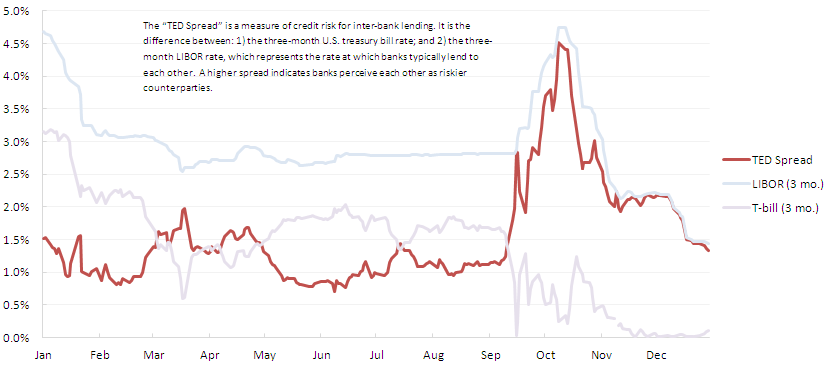Floating Interest Rate
A variable rate of interest
What is a Floating Interest Rate?
A floating interest rate refers to a variable interest rate that changes over the duration of the debt obligation. It is the opposite of a fixed interest rate, where the interest rate remains constant throughout the life of the debt. Loans, such as residential mortgages, can be acquired at both fixed interest rates and at floating interest rates that periodically adjust based on interest rate market conditions.

Breaking Down Floating Interest Rate
The change in interest rate with a floating rate loan is typically based on a reference, or “benchmark”, rate that is outside of any control by the parties involved in the contract. The reference rate is usually a recognized benchmark interest rate, such as the prime rate, which is the lowest rate that commercial banks charge their most creditworthy customers for loans (typically, large corporations or high net worth individuals).
Floating interest rate debt often costs less than fixed-rate debt, depending on the yield curve. In compensation for lower fixed rate costs, borrowers must bear a higher interest rate risk. Interest rate risk, for bonds, refers to the risk of rates rising in the future. When the yield curve is inverted, the cost of debt with floating interest rates may actually be higher than fixed-rate debt. However, an inverted yield curve is the exception rather than the norm.
Floating rates are more likely to be less expensive borrowing in the case of a long-term loan, such as a 30-year mortgage, because lenders require higher fixed rates for longer-term loans, due to the inability to accurately forecast economic conditions over such a long period of time. There is a general assumption that interest rates will rise – or, increase – over time,
Sometimes, a floating interest rate is offered with other special features, such as limits on the maximum interest rate that can be charged or limits on the maximum amount by which the interest rate can be increased from one adjustment period to the next. These features are mostly found in mortgage loans. Such qualifying clauses in the loan contract are primarily to protect the borrower from the interest rate suddenly increasing to a prohibitive level that would likely cause the borrower to default.

Uses of Floating Interest Rate
There are many uses for a variable interest rate. Some of the most common examples are:
- Floating interest rates are used most commonly in mortgage loans. A reference rate or index is followed, with the floating rate calculated as, for example, “the prime rate plus 1%”.
- Credit card companies may also offer floating interest rates. Again, the floating interest rate the bank charges is usually the prime rate plus a certain spread.
- Floating rate loans are common in the banking industry for large corporate customers. The total rate the customer pays is decided by adding (or, in rare cases, subtracting) a spread or margin to a specified base rate.
Reference Rate
Changes in a floating interest rate are based on a reference rate, or benchmark. Common benchmarks include the prime rate (used for consumer and corporate lending), the federal funds rate (often used for short-term lending between institutions), and the Secured Overnight Financing Rate (SOFR), which is widely used in capital markets and institutional loans.
The floating rate is typically equal to the selected base rate plus a spread or margin. For example, interest on a loan might be priced at 30-day SOFR + 2%, meaning the rate adjusts periodically based on the prevailing SOFR plus the agreed-upon spread. Floating interest rates may reset on a quarterly, semi-annual, or annual basis, depending on the loan terms. These benchmarks allow interest rates to adjust with market conditions over time.
Advantages of Floating Interest Rate
The following are the benefits of a variable interest rate:
- Generally, floating interest rates are lower compared to the fixed ones, hence, helping in reducing the overall cost of borrowing for the debtor.
- There is always a chance of unexpected gains. With higher risk also comes the prospect of future gains. The borrower will benefit if interest rates decline, because the floating rate on his loan will go down. The lender will enjoy additional profit if interest rates rise, because he can then raise the floating rate charged to the borrower.
Disadvantages of Floating Interest Rate
The following are the potential disadvantages of a variable interest rate loan:
- The interest rate depends largely on market situations, which can prove to be dynamic and unpredictable. Hence, the interest rate may increase to a point where the loan may become difficult to repay.
- The unpredictability of interest rate changes makes budgeting more difficult for the borrower. It also makes it harder for the lender to forecast future cash flows accurately.
- In times of unfavorable market conditions, financial institutions try to play it safe by putting the burden on customers. They will charge high premiums over the benchmark rate, ultimately affecting the pockets of borrowers.
Summary
Interest rates are some of the most influential components in the economy. They help in shaping day-to-day decisions of individuals and corporations, such as determining whether it’s a good time to buy a house, take out a loan, or put money in savings.
The level of interest rates is inversely proportional to the level of borrowing, which, in turn, affects economic expansion. Interest rates influence stock prices, bond markets, and derivatives trading.
Additional Resources
CFI is the official provider of the global Capital Markets & Securities Analyst (CMSA®) certification program, designed to help anyone become a world-class financial analyst. To keep advancing your career, the additional CFI resources below will be useful: